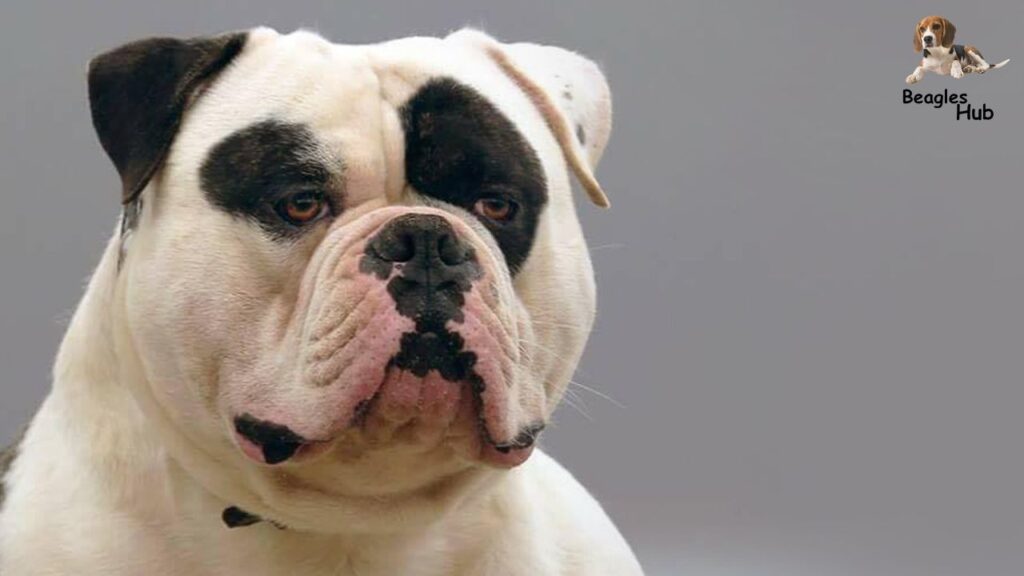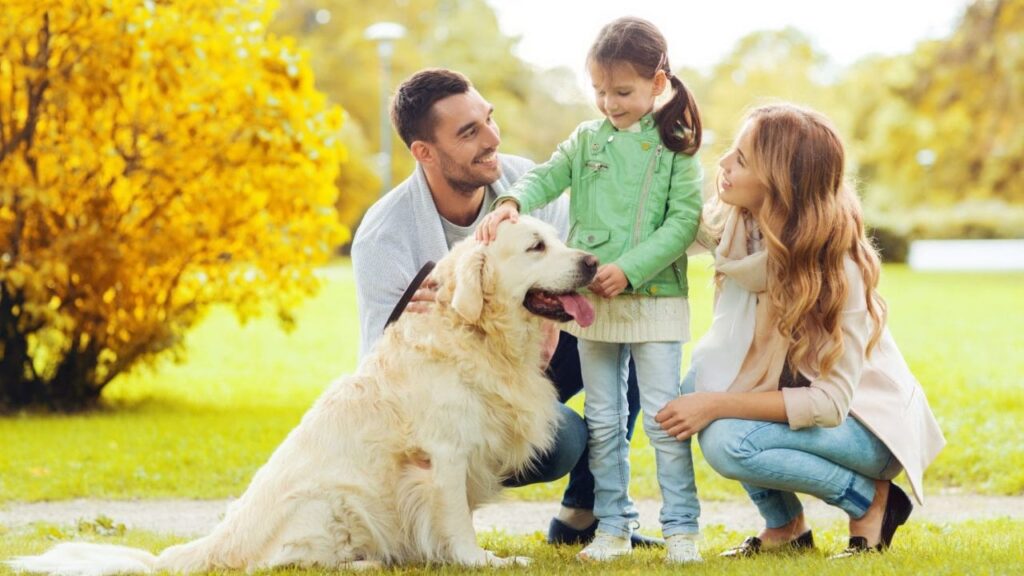When it comes to powerful and muscular dog breeds. The American Bulldog and the Pitbull often come to mind. While these two breeds may share some similarities in appearance. They are distinct breeds with their own unique characteristics.
In this comprehensive comparison, we’ll explore the main differences between American Bulldogs and Pitbulls. Helping potential dog owners make an informed decision about which breed might be the best fit for their lifestyle.
Visual Differences
At first glance, American Bulldogs and Pitbulls may appear similar due to their muscular builds and broad heads.
There are several key visual differences between these two breeds:
Size and Build
American Bulldogs are generally larger and more heavily built than Pitbulls. They have a more substantial bone structure and a broader chest. Pitbulls, while muscular, tend to have a more athletic and lean appearance.
Head Shape
The American Bulldog typically has a larger, more square-shaped head with a pronounced stop (the indentation between the muzzle and forehead). Pitbulls have a more wedge-shaped head with a less pronounced stop.
Muzzle
American Bulldogs often have a shorter, more pushed-in muzzle, especially in the “bully” type. Pitbulls have a longer muzzle that’s more proportionate to their head size.
Ears
While both breeds can have ears that stand up or fold over, American Bulldogs more commonly have floppy ears. Pitbulls often have rose-shaped ears that fold over at the sides of their head.
Coat
Both breeds have short, smooth coats, but American Bulldogs may have slightly longer and denser fur compared to the very short, close-lying coat of Pitbulls.
Read This Blog: Male Vs. Female Beagle: Which Is The Better Choice?
At a Glance
To quickly summarize the key differences between American Bulldogs and Pitbulls:
| Characteristic | American Bulldog | Pitbull |
| Height | 20-28 inches | 17-21 inches |
| Weight | 60-120 pounds | 30-65 pounds |
| Lifespan | 10-16 years | 12-16 years |
| Temperament | Confident, social, protective | Friendly, energetic, loyal |
| Energy Level | Moderate to high | High |
| Trainability | Moderate | High |
| Shedding | Moderate | Low to moderate |
| Family-friendly | Yes, with proper training | Yes, with proper training |
American Bulldog Overview

American Bulldogs are descendents of the Old English Bulldog, brought to America by working-class immigrants. They were primarily used for farm work, including catching livestock and guarding property. Today, they are popular family companions and working dogs.
Personality
American Bulldogs are known for their confident and social nature.
They are typically:
- Loyal and affectionate with family members
- Protective of their home and family
- Good with children when properly socialized
- Friendly towards strangers if well-trained
- Intelligent and eager to please
These dogs have a strong prey drive and may not always get along with other pets, especially smaller animals. Early socialization is crucial to ensure they develop into well-rounded adults.
Training
Training an American Bulldog requires patience, consistency, and positive reinforcement methods.
They respond well to:
- Firm but gentle guidance
- Clear boundaries and rules
- Early socialization with people and other animals
- Regular obedience training
- Mental stimulation through puzzle toys and training exercises
American Bulldogs can be stubborn at times, so it’s important to establish yourself as the pack leader early on. They excel in various dog sports and activities, including weight pulling, agility, and obedience trials.
Health & Care
American Bulldogs are generally healthy dogs, but like all breeds.
They’re prone to certain health issues:
- Hip and elbow dysplasia
- Cherry eye
- Thyroid problems
- Allergies
- Deafness (in white American Bulldogs)
Regular veterinary check-ups, a balanced diet, and proper exercise can help maintain their health. They have a moderate to high energy level and require daily exercise to stay physically and mentally fit.
Grooming
American Bulldogs have relatively low grooming needs. Brush their coat once or twice a week to remove loose hair. Bathe them every 6-8 weeks or as needed. Clean their ears regularly to prevent infections. Trim their nails monthly. Brush their teeth several times a week for good oral health
Suitable For:
American Bulldogs are best suited for:
- Active families with older children
- Experienced dog owners
- Homes with secure, fenced yards
- Those looking for a loyal and protective companion
- People who can provide consistent training and socialization
Pitbull Overview

It’s important to note that “Pitbull” is not a specific breed but rather a term used to describe several breeds, including the American Pit Bull Terrier, American Staffordshire Terrier. And Staffordshire Bull Terrier. For this comparison, we’ll focus on the American Pit Bull Terrier.
Also Read This Blog: Beagle Vs Basset Hound
Personality
Pitbulls are often misunderstood due to negative stereotypes.
Well-raised Pitbulls are known for being:
- Friendly and affectionate with people
- Energetic and playful
- Intelligent and eager to please
- Loyal to their family
- Good with children when properly socialized
Despite their reputation, Pitbulls are not inherently aggressive towards humans. However, they may have a high prey drive and can be dog-aggressive if not properly socialized.
Exercise
Pitbulls are high-energy dogs that require plenty of exercise to stay happy and healthy.
- Daily walks or jogs (at least 1-2 hours)
- Play sessions in a securely fenced yard
- Mental stimulation through training and puzzle toys
- Dog sports like agility, weight pulling, or flyball
Without adequate exercise, Pitbulls may develop destructive behaviors due to pent-up energy.
Training
Pitbulls are intelligent and eager to please. Making them relatively easy to train. The key is to use positive reinforcement techniques. Start training and socialization early in their lives. Consistency is crucial establish clear rules and boundaries.
Provide mental stimulation through obedience training. Focus on impulse control exercises to channel their energy positively. Proper training is essential to ensure Pitbulls grow into well-behaved and social adults.
Health & Care
While generally healthy Pitbulls can be prone to certain health issues:
- Hip dysplasia
- Allergies
- Hypothyroidism
- Heart disease
- Skin problems
Regular vet check-ups, a balanced diet, and proper exercise are crucial for maintaining their health. Pitbulls have a high energy level and require daily exercise to stay physically and mentally fit.
Grooming
Pitbulls have low grooming needs due to their short, smooth coat. Brush their coat once a week to remove loose hair. Bathe them every 4-6 weeks or as needed. Clean their ears regularly. Trim their nails monthly. Brush their teeth several times a week.
Suitable For:
Pitbulls can be wonderful companions for the right owners, but they’re not a one-size-fits-all breed. Their high energy, strong personalities, and specific needs make them best suited for certain types of homes and lifestyles.
Pitbulls are best suited for:
- Active individuals or families
- Experienced dog owners
- Those who can provide plenty of exercise and mental stimulation
- People willing to deal with potential breed restrictions
- Homes with secure, fenced yards
Which Breed Is Right for You?

Choosing between an American Bulldog and a Pitbull is a significant decision that requires careful consideration of your lifestyle, experience, and preferences. Both breeds have their unique characteristics, strengths, and challenges.
That may make one more suitable for your specific situation. In this section, we’ll explore key factors to help you determine which of these powerful and loyal breeds might be the perfect fit for your home and family.
Choosing between an American Bulldog and a Pitbull depends on various factors:
- Size preference: If you prefer a larger dog, the American Bulldog might be a better choice.
- Energy level: Pitbulls generally have higher energy levels and require more exercise.
- Training experience: Both breeds benefit from experienced owners, but Pitbulls may be slightly easier to train.
- Living space: American Bulldogs need more space due to their size, while Pitbulls can adapt to apartment living if given enough exercise.
- Local regulations: Some areas have breed-specific legislation that may restrict Pitbull ownership.
- Family composition: Both breeds can be great with children when properly socialized, but American Bulldogs may be better suited for families with very young children due to their more easy-going nature.
- Other pets: American Bulldogs may have a stronger prey drive, potentially making them less suitable for homes with small pets.
- Grooming preferences: Both breeds have relatively low grooming needs, but Pitbulls may shed slightly less.
- Protection needs: American Bulldogs tend to be more naturally protective, making them better suited as guard dogs.
- Health concerns: While both breeds can face health issues, American Bulldogs may be prone to more breed-specific problems.
Frequently Asked Questions
Are American Bulldogs and Pitbulls aggressive breeds?
Neither breed is inherently aggressive. Their behavior depends on proper training, socialization, and responsible ownership.
Which breed is better with children?
Both can be excellent with children when properly socialized, but American Bulldogs may be slightly more tolerant of rough play.
Do American Bulldogs and Pitbulls require a lot of exercise?
Pitbulls generally require more exercise, but both breeds need regular physical activity and mental stimulation.
Are these breeds easy to train?
Pitbulls are often easier to train due to their eagerness to please, but American Bulldogs can also be trained effectively with consistency.
Do American Bulldogs and Pitbulls have any breed-specific health issues?
Both breeds can be prone to hip dysplasia and allergies, but American Bulldogs may face more breed-specific health concerns.
Final Thought’s
Both American Bulldogs and Pitbulls can make wonderful companions for the right owners. American Bulldogs are larger, more protective, and may require more experienced handling. Pitbulls are typically more energetic, easier to train, and adaptable to various living situations. Regardless of which breed you choose, responsible ownership, proper training, and socialization are key to raising a well-behaved and loving dog. Consider your lifestyle, living situation, and local regulations when making your decision, and always adopt or purchase from reputable sources to ensure the health and well-being of your new furry friend.







